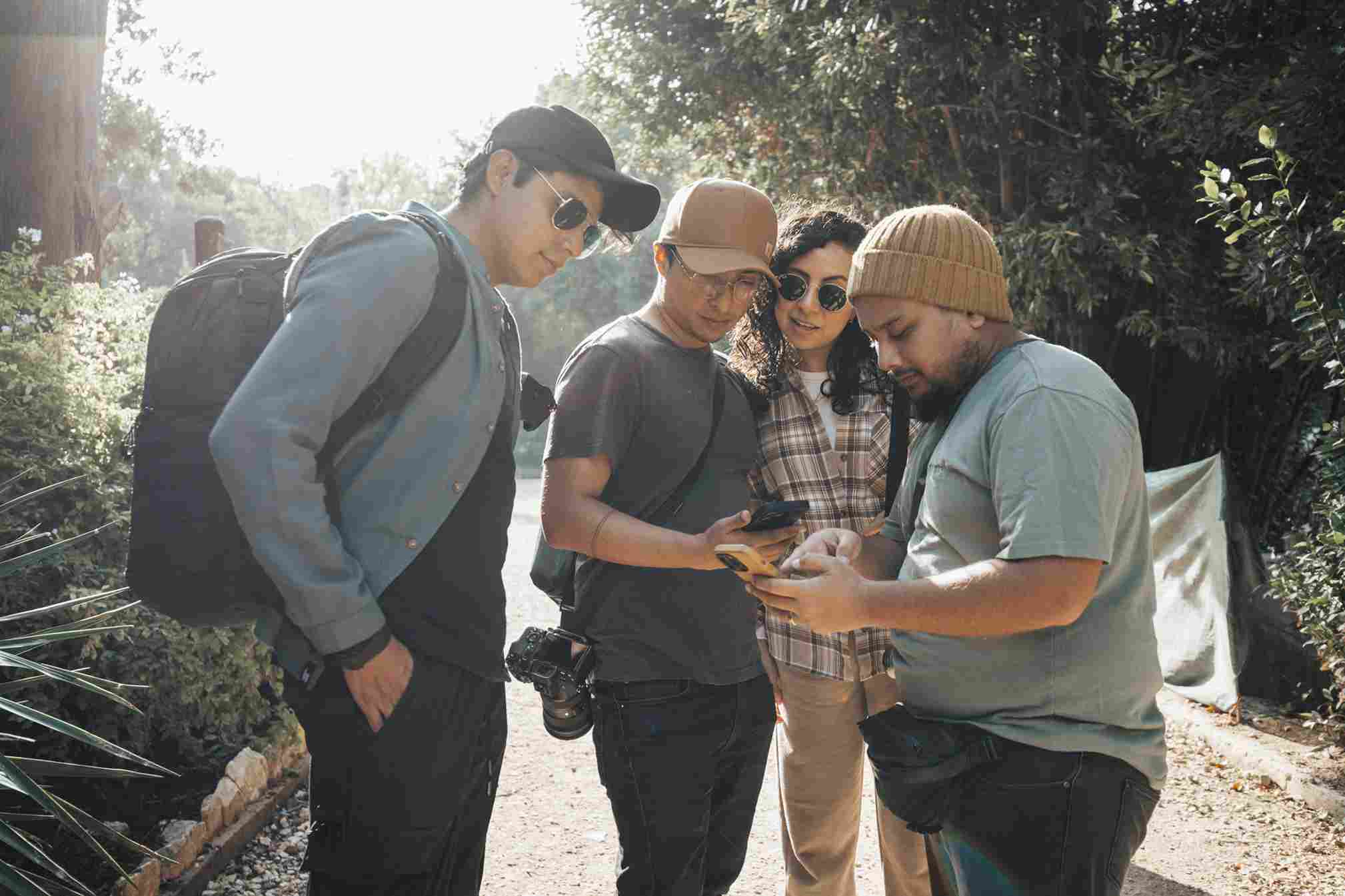“Teamwork makes the dream work” may be an over-used cliché, but as with all clichés, there’s truth at its heart. People who collaborate efficiently and productively as a team really are more likely to deliver the dream of business success.
However, efficient, effective and productive teams don’t appear by magic. Creating a group of people who trust and support each other to produce high-quality work together starts with building bonds between all team members. More often than not, this requires a dedicated and structured approach.
Team bonding is not the same as team building, although the two terms get used interchangeably. In the UK, we tend to refer to team building as a general term that includes both the process of bringing individual employees together to “build a team” (whether it is new or existing) and the process of creating “team bonds” between those team members to make the team effective. If you work in the US, you may notice that people differentiate between the more practical nature of team building and the more emotionally-focussed team bonding more than we do in the UK.
If you are looking for fresh ideas to inspire building team bonds, we have ten ideas to get those creative juices flowing.

Why Building Team Bonds is Essential
“If everyone is moving forward together, then success takes care of itself.” – Henry Ford
When a team is bonded, the individual members within it have a strong sense of belonging. This sense of belonging enhances teamwork by creating a safe space for the entire team, which means that people in strong teams are more likely to:
- Be more creative.
- Take risks with innovative ideas and approaches.
- Ask for support and feedback when they need it.
- Have clear and frequent communication with each other.
- Support each other through tricky periods.
- Be resilient when problems arise.
In short, the safe space of a team with strong bonds allows the team members to thrive and do their best, leading to high employee engagement and job satisfaction and, ultimately, to success for the business.
Ten Ways to Build Team Bonds
Team building is not a new idea, and it can be easy to think that it’s something that will take care of itself. However, if you want to create strong relationships between team members and have effective teams, your approach must be intentional and structured. Think of this as an investment in the team’s emotional intelligence and be prepared that the results may not be immediate.
Leadership sets the tone for teamwork, so you may need to start by building the emotional intelligence of those managing teams and supporting initiatives they have for team building.
-
Social activities
Spending time together outside the working environment is a tried and tested way to allow team bonds to develop and cement. Traditionally, this was going to the local for a drink on a Friday. With remote working and a focus on inclusivity, social activities have evolved to include virtual quiz nights, cooking showdowns, charitable events such as random acts of kindness days, or spending time together as volunteers. The key here is to ensure that the activities allow team members to switch off from their work environment and spend time getting to know each other as people rather than co-workers.

-
Team building exercises
Team-building activities such as scavenger hunts, two truths and a lie, and bridge building are not the same as social activities because there is a clear focus on team-building. While it may sound forced to some people, dedicated time spent on games and activities that make you work together as a team leads to a better understanding of each other and the team dynamic – and makes your team more effective. Think of it like muscle memory: when you’ve done something a few times in training, it gets easier, and you stop needing someone to tell you how to do it. Here are 15 team-building games for you to try for those teams meeting in real life and 10 virtual team-building ideas for remote workforces.
-
Start team traditions
Team traditions can be anything from celebrating birthdays to creating a specific time each week for the other team members to check in with each other on how they are rather than what they are working on. Or they can be marking Wednesday as the ‘hump’ day with donuts or taking it in turns to share something that has inspired you that week. Just having a regular point where the whole team can stop and spend some time understanding what is going on for individual team members and get to know each other a bit better will foster good teamwork.
-
Create a culture of feedback
Establishing a team culture where feedback is requested, actively engaged with and then responded to is a crucial way to build team bonds. Encouraging feedback (and including 360 degree feedback) ensures that multiple perspectives are considered, which helps everyone on the team feel included and is also a good skill for business in general.
For teams focusing on diversity, equity and inclusion, making feedback a central pillar of how you all work together is critical for developing those team bonds. Taking feedback seriously is vital to creating an inclusive team, which will lead to team members feeling valued and motivated to improve overall team performance.

-
Celebrate the small wins
Linked to creating a culture of feedback, it’s essential to spend time celebrating what has gone well and listening to and sharing what could be improved. High-performing teams ensure the whole team knows when something has gone well. This reiterates the message that the team goals are a group effort and that each team member’s strengths are essential to the team’s overall success.

-
Use meetings to cement team bonds
While meetings will naturally be focussed on the business issues of the day, they are also an opportunity to cement team bonds if approached correctly. One-on-one meetings are an excellent chance to learn how an individual feels within the team dynamic and consider if adjustments need to be made. Larger meetings are team-building sessions in their own right, so running these effectively is key to fostering successful team collaboration. Keeping to time and using agendas with pre-reading sets the boundaries for the meeting, which helps people feel safe and more confident. Then make sure that everyone’s voice is brought into the room so the message is clear: this is a team that values the contribution of everyone in it. Strategic or brainstorming sessions can be particularly valuable in reiterating this.
-
Role model empathy, understanding and approachability
Leadership style within an organisation sets the tone for successful teamwork. When team leaders model the emotional and communication skills that are essential for a team to bond properly, they set the tone for others to follow. These skills include understanding others’ perspectives, showing empathy and being open and approachable with both body language and in discussions. The result is building trust in both the leadership and the overall team, which is more likely to lead to effective teamwork.
-
Allow time for small talk and water cooler chat
In busy working environments, especially when you primarily work online with each other, it can be easy to skip the social niceties and focus on the work at hand. However, it is essential to remember that small and relaxed moments of connection, such as asking how someone’s day is before you start a meeting or hearing about their holiday as you make a cup of coffee together, can slowly build the bonds between individual team members that will eventually lead to highly successful workplace teamwork.
-
Invest in training
Distinct from investing in specific team-building activities, training undertaken by the whole team together has dual benefits: developing skills identified for the team and the sense of togetherness that can come from learning a new skill with other people. Training is a natural way for a group or team to bond, especially if it is challenging and encourages new ways of thinking. Facing a situation that you find hard and overcoming the fear with the help of those around you is a surefire way to get to know each other, learn to trust the rest of the team and understand what support looks like. This process can lay the foundations for more effective teamwork in the workplace when everyone is back at their day job.

-
Do your research
In addition to this article, it’s worth arming yourself (and your team) with some basic knowledge about how group dynamics work and the interplay between individuals’ emotions, the dynamic within a team and how the team presents itself and responds to the outside world. You can read about building the emotional intelligence of groups but there are plenty of other books, blogs and articles to supplement your knowledge. By understanding how the connection between individuals within a group is created, developed and supported by the team leader, it’s possible to lay the foundations for a team with a greater sense of its own identity, strengths and potential. After all, teamwork does make the dream work.


